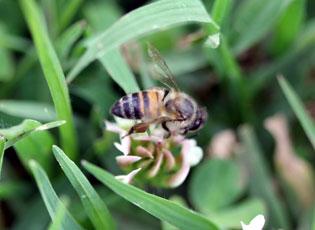Apis mellifera scutellata Lepeletier (Ellis and Ellis 2008; Sheppard and Smith 2000)
Africanized honeybee, African honey bee (AHB), killer bee
Originally from Africa; first hybridized in South America (Kono and Kohn 2015)
First found in Texas in 1990 (Kono and Kohn 2015)
Imported to South America for honey production, where they escaped containment and hybridized with European honey bees (Kono and Kohn 2015)
More aggressive than European honeybees; negative impact on honey production industry (Kono and Kohn 2015)

Adult of the African strain of the honey bee seen at the edge of the Ngorongoro Crater
Photo by Whitney Cranshaw, Colorado State University
Videos
All Resources
Selected Resources
The section below contains highly relevant resources for this species, organized by source.
Council or Task Force
Partnership
Federal Government
State and Local Government
Academic
Professional
Ellis, J., and A. Ellis. 2008. African honey bee, Africanized honey bee, or killer bee, Apis mellifera scutellata Lepeletier (Hymenoptera: Apidae). In: J.L. Capinera (Ed.), Encyclopedia of Entomology (Vol. 4, pp. 59-66). Dordrecht: Springer.
Kono Y., and J.R. Kohn. 2015. Range and frequency of Africanized honey bees in California (USA). PLoS ONE 10(9): e0137407.
Sheppard, W.S., and D.R. Smith. 2000. Identification of African-derived bees in the Americas: a survey of methods. Annals of the Entomological Society of America 93(2):159-176.
